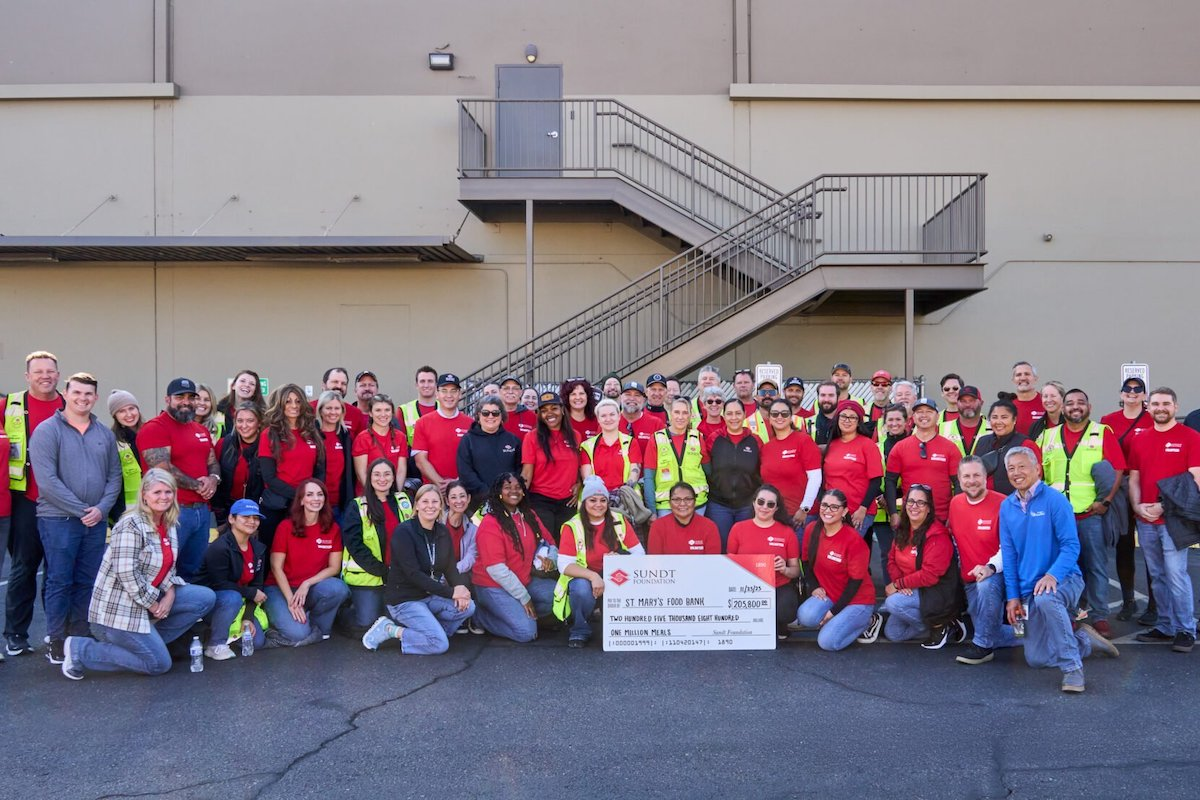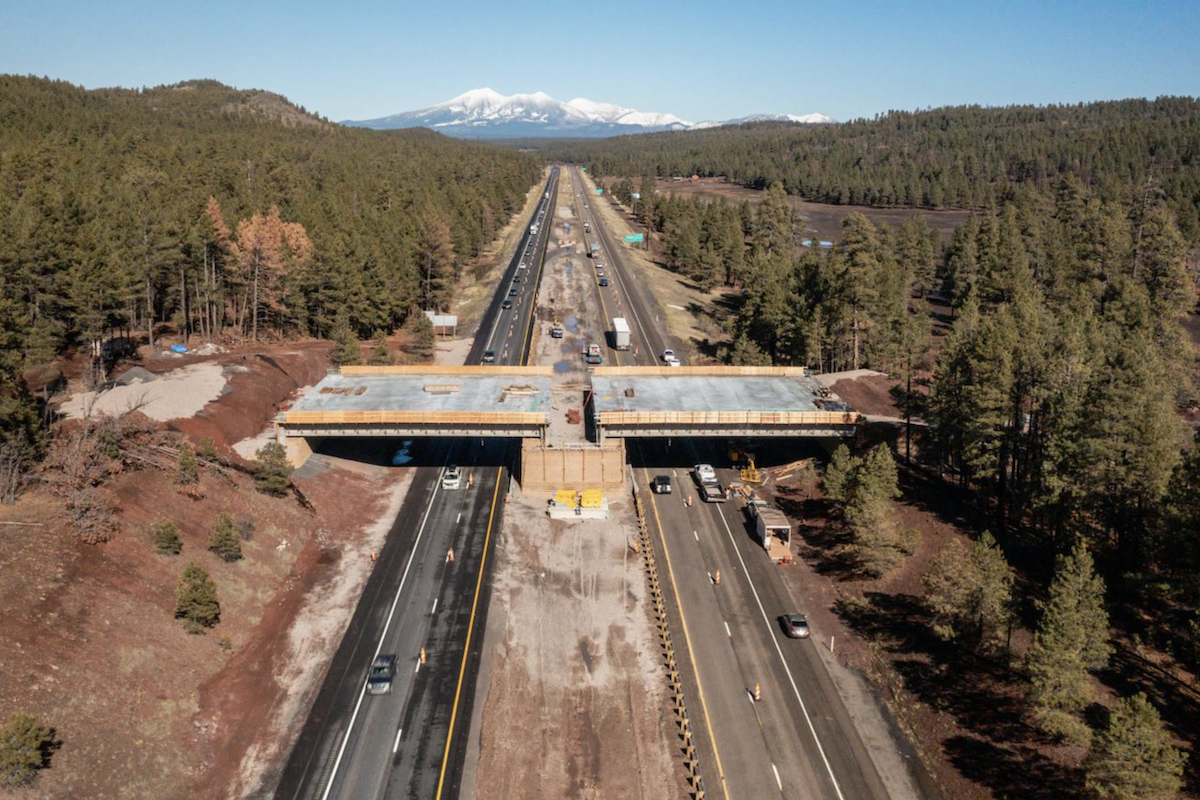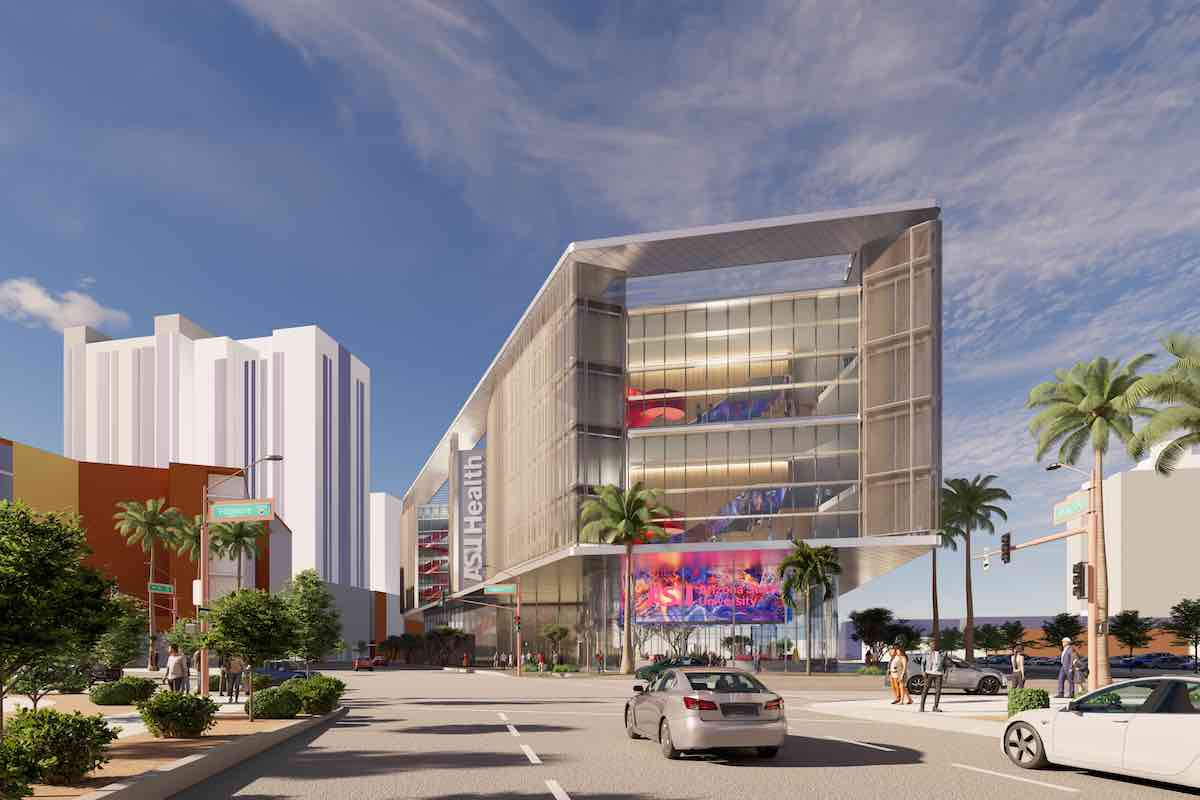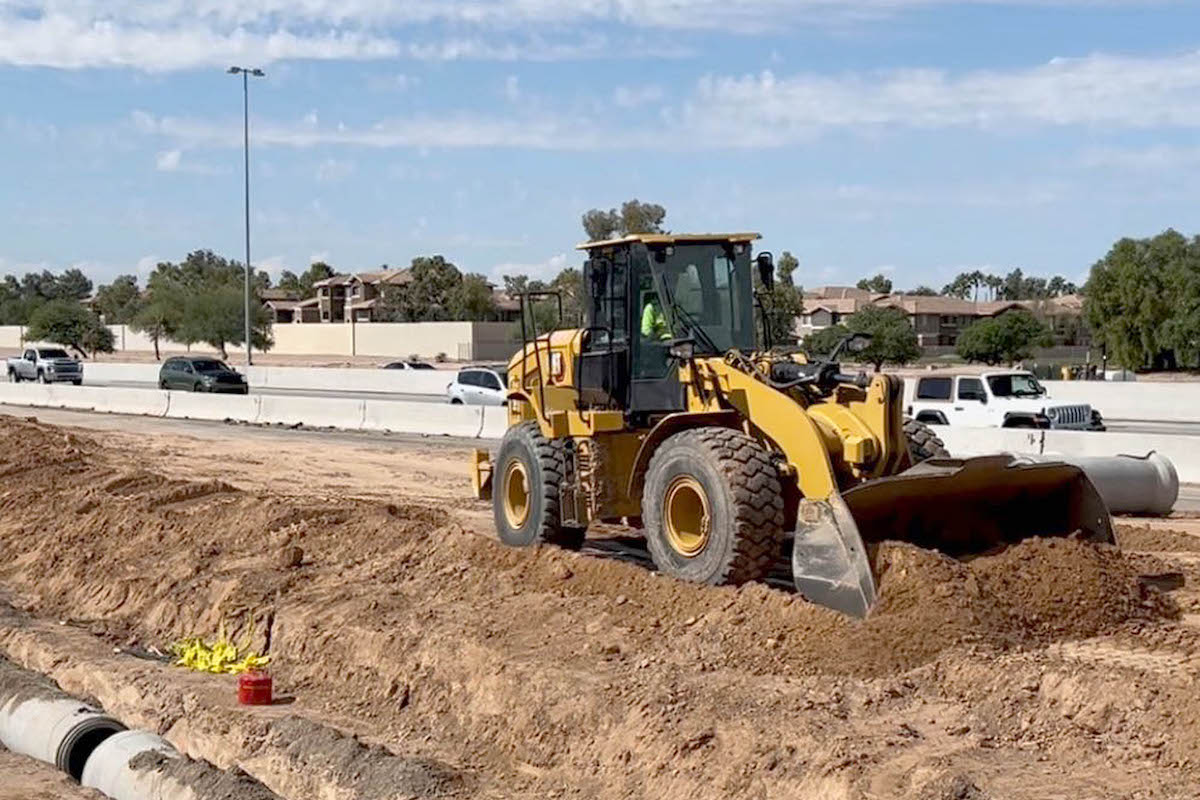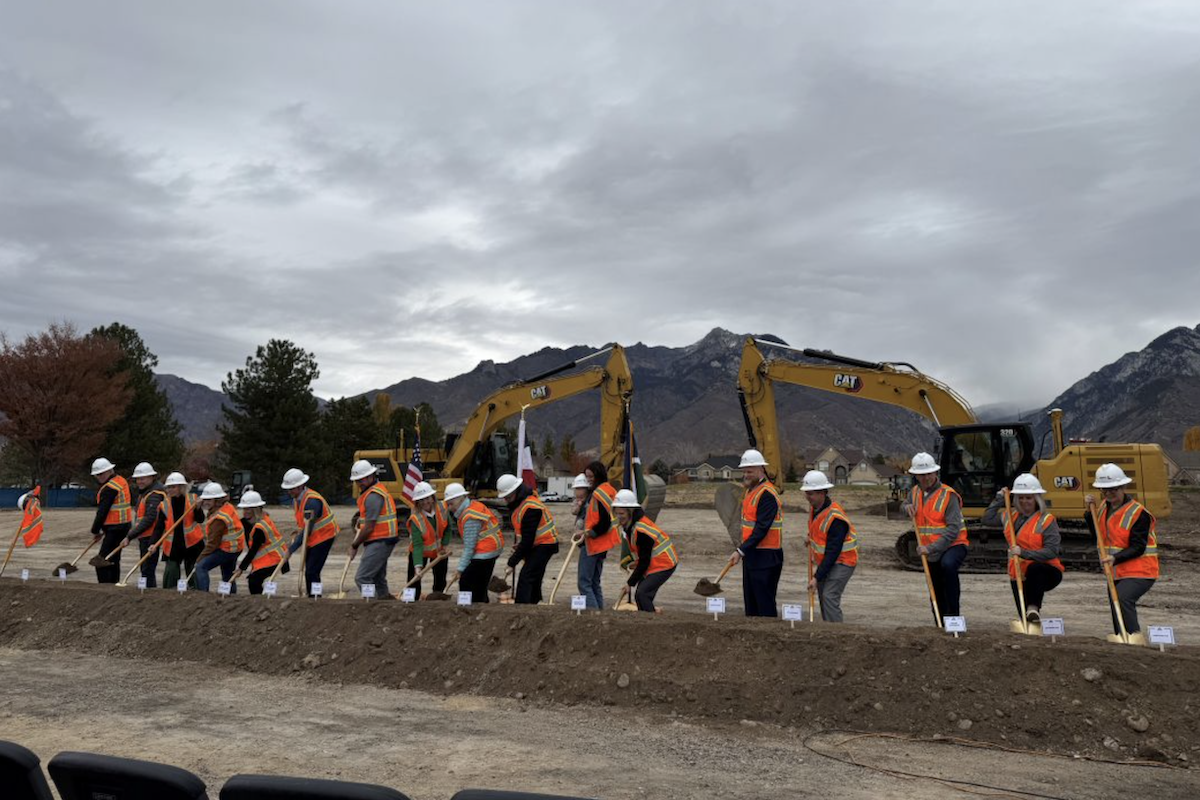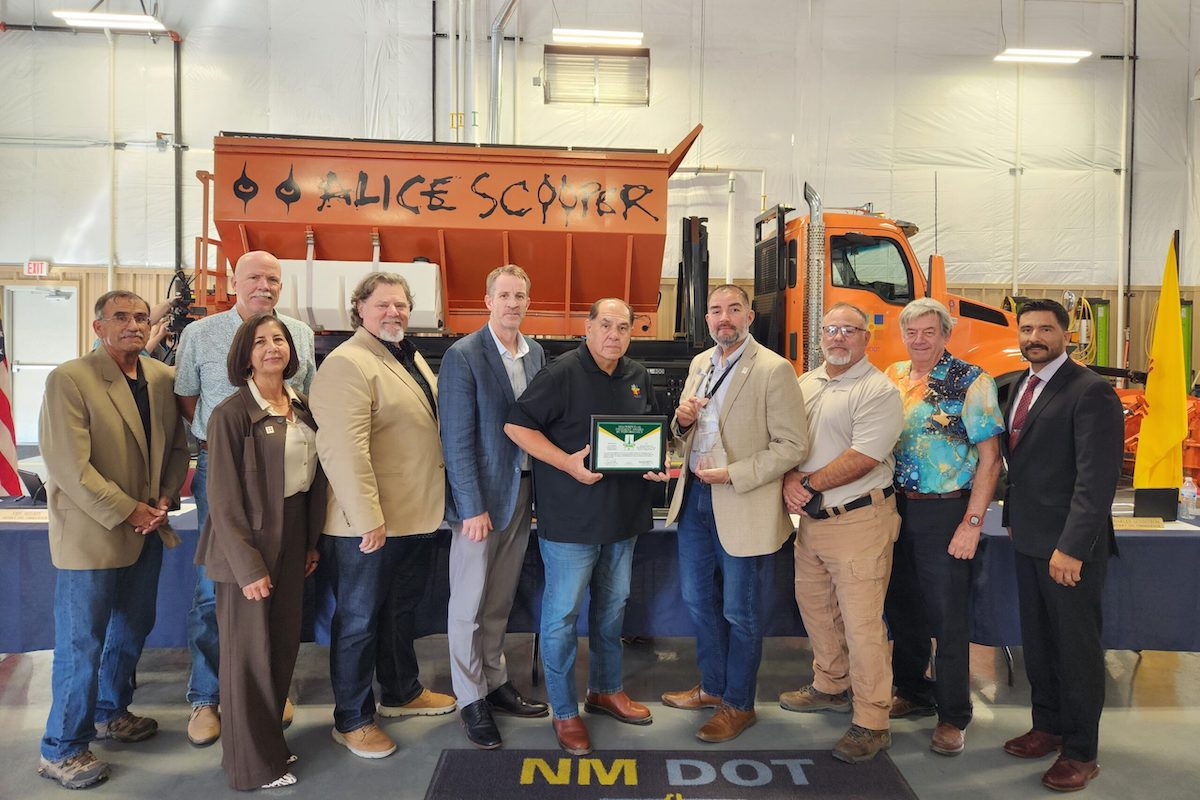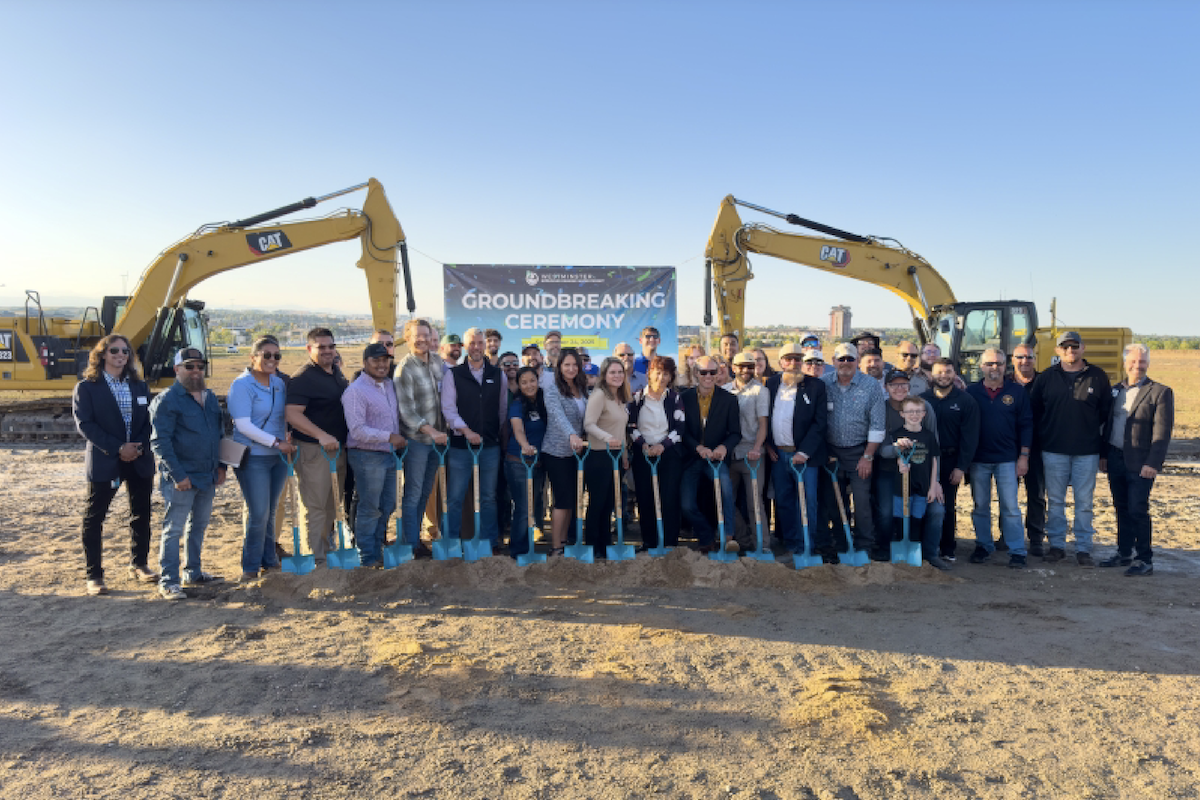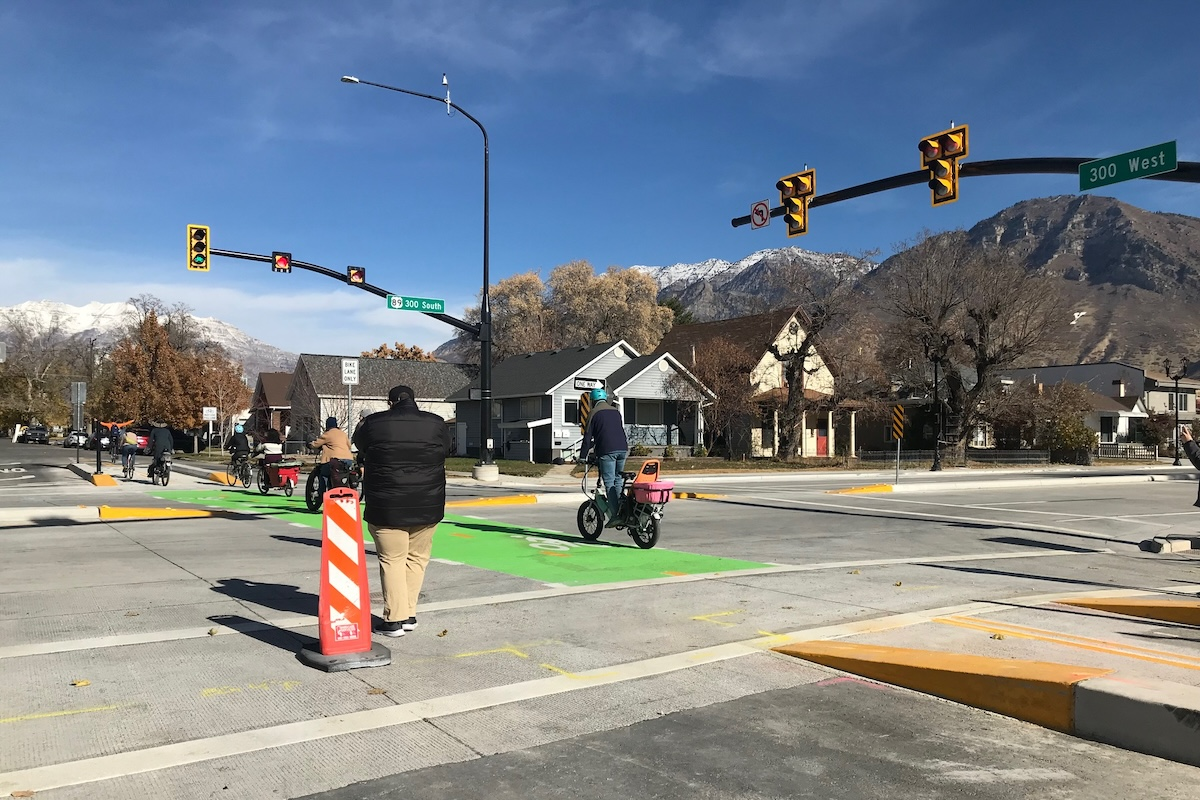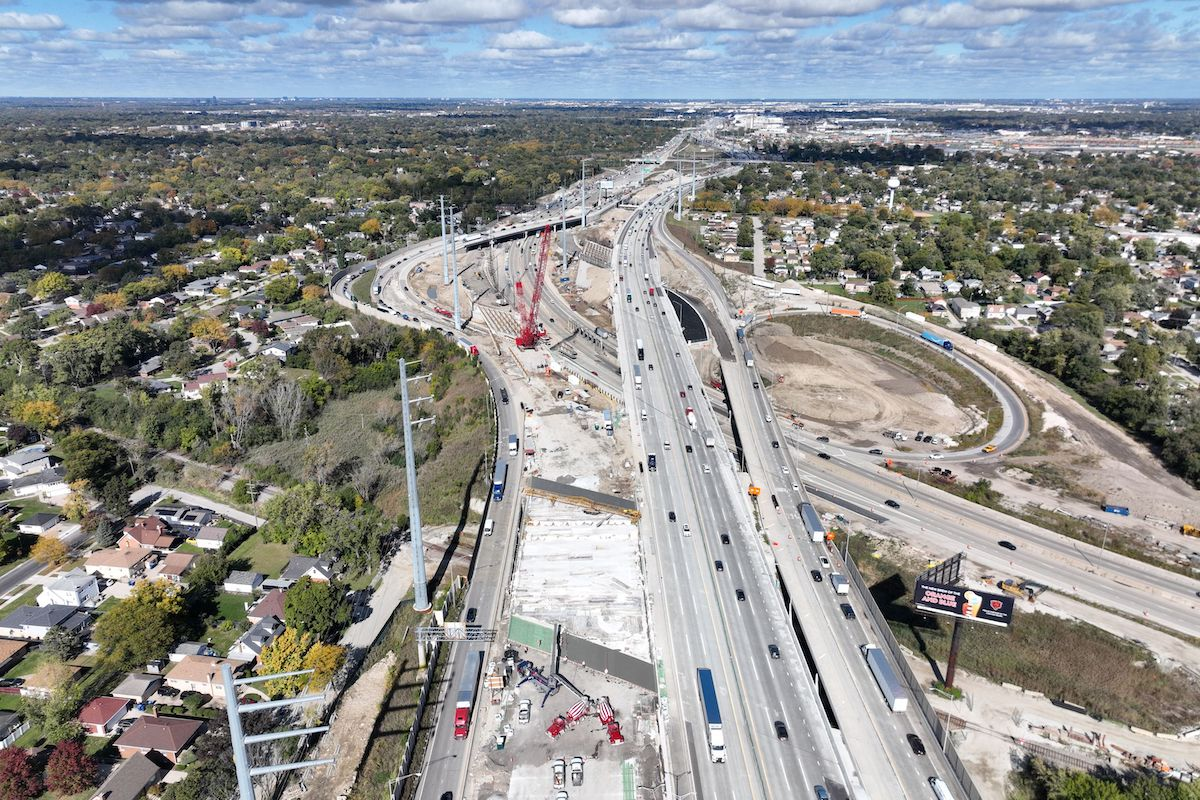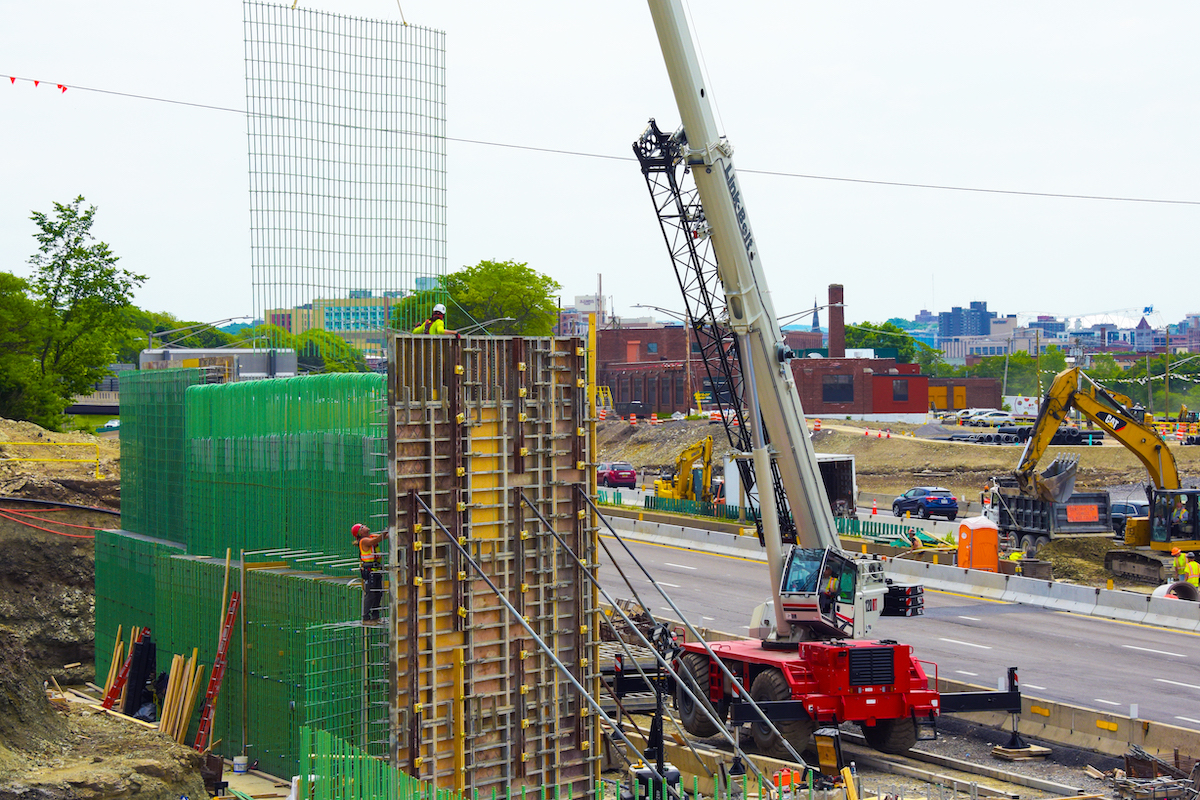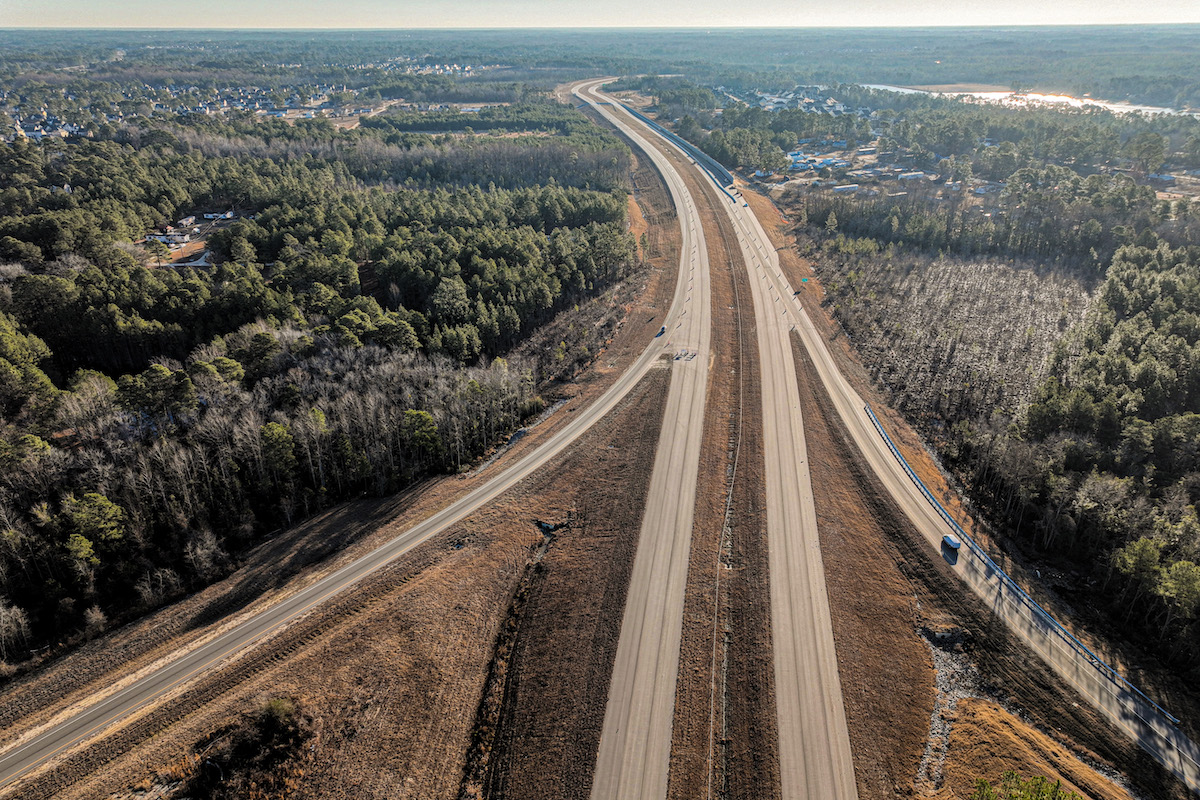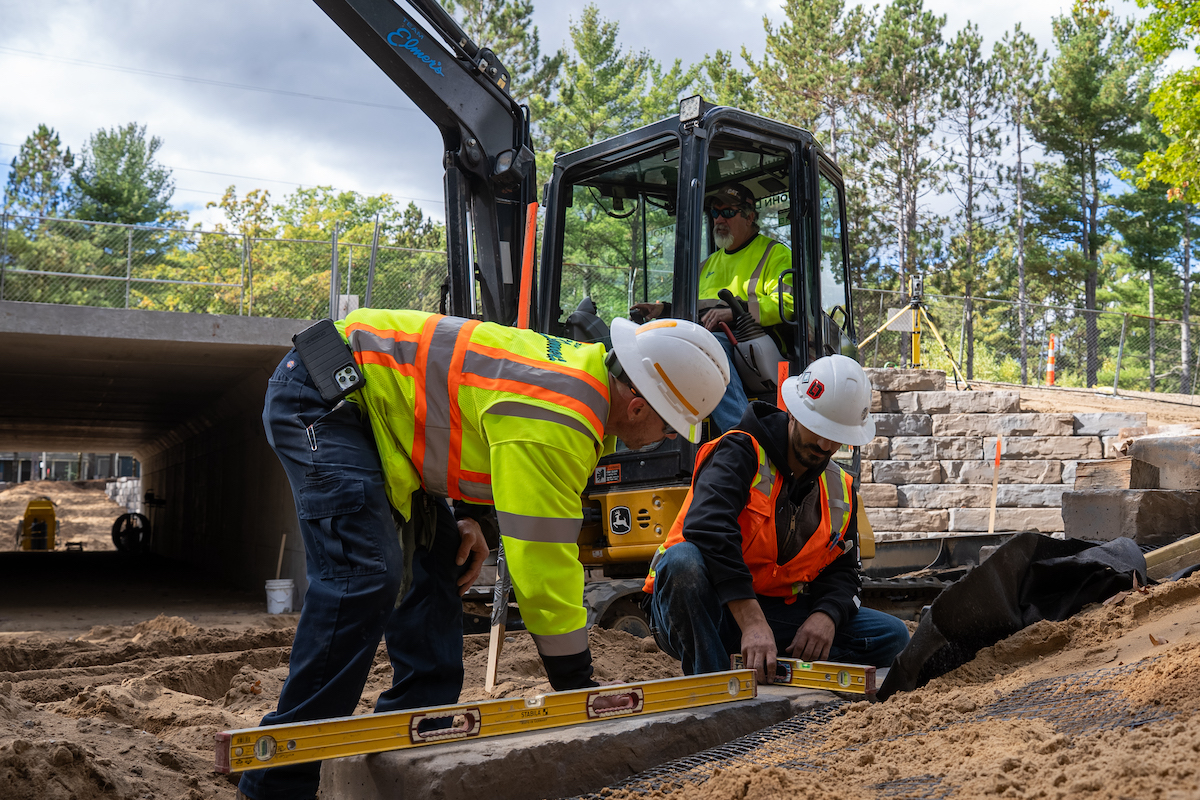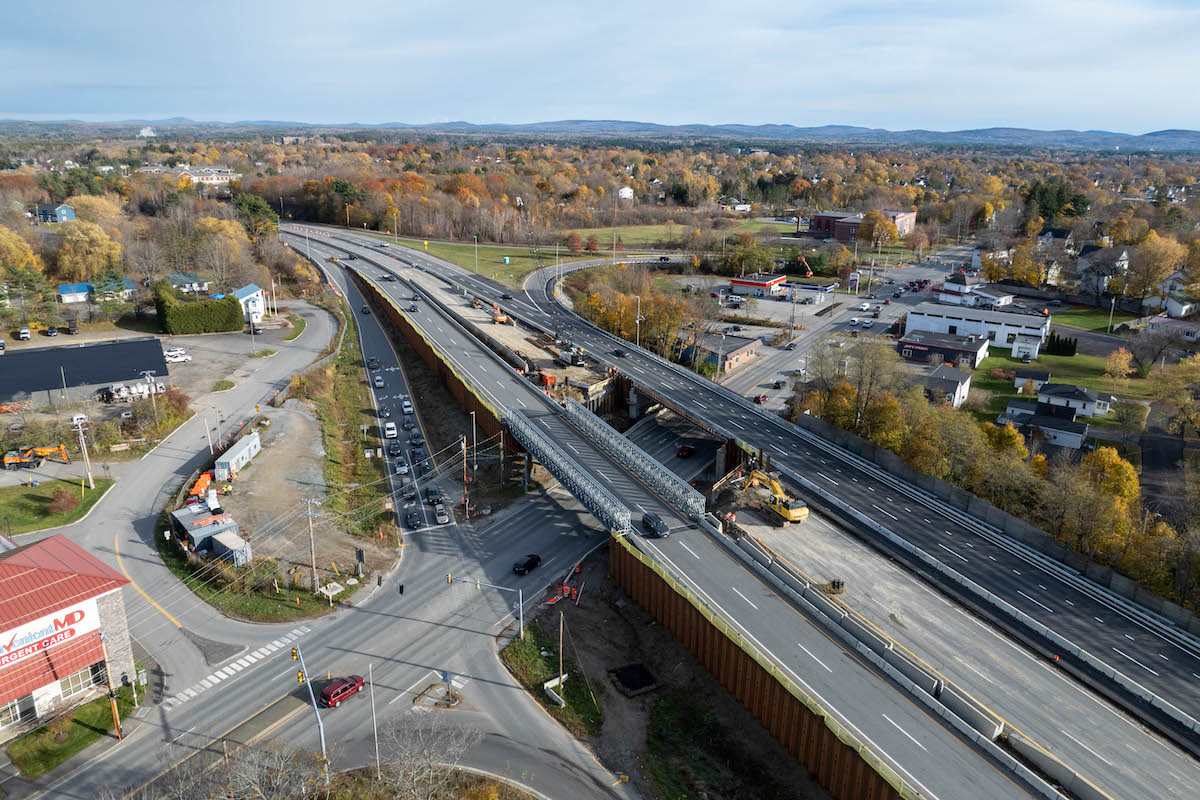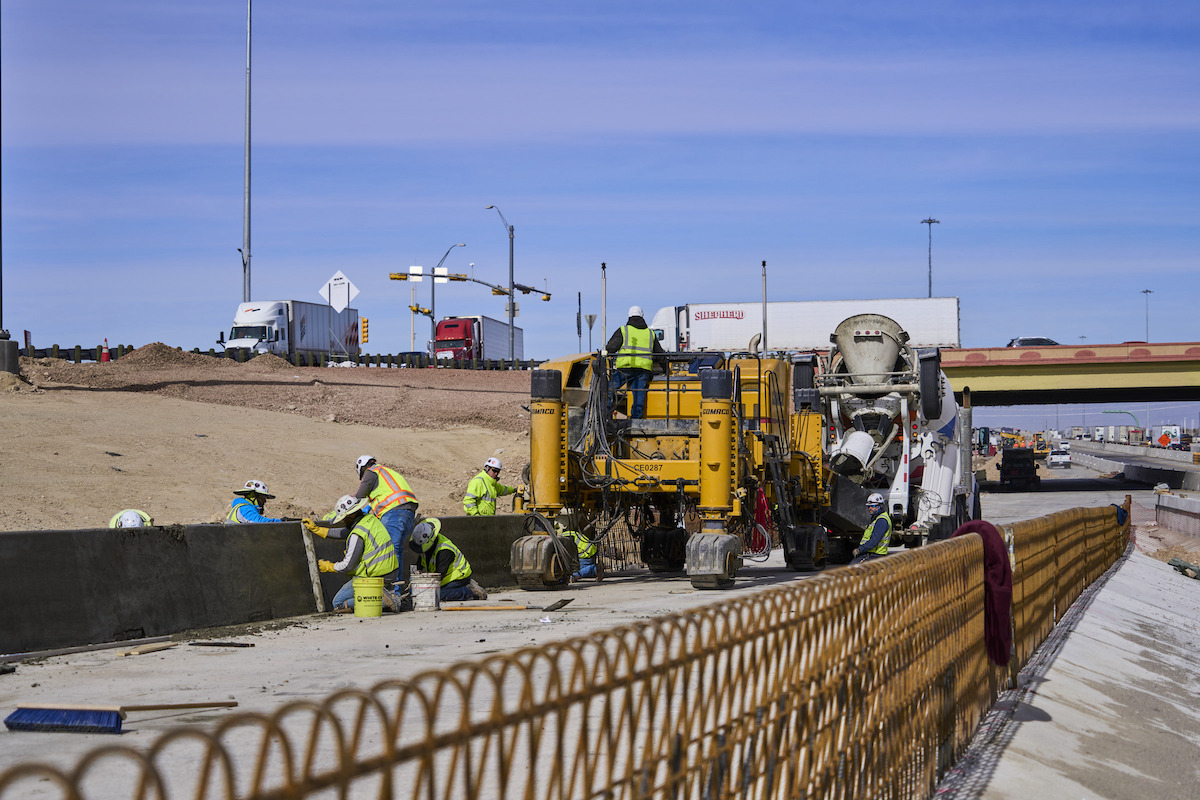This is the time of year when predictions abound, but the truth is we are entering a year unlike any other. Instead of making definitive claims about the future, let’s examine the key factors that will shape infrastructure development in 2025, considering past trends, potential policy shifts under the new administration, and the rising influence of transformative technologies like artificial intelligence (AI).
The Infrastructure Investment and Jobs Act (IIJA) of 2021 authorized five years of funding for infrastructure projects, stimulating economic activity and job growth. In fact, the American Road & Transportation Builders Association expects overall highway and bridge construction activity (as measured by the U.S. Census Bureau’s Value of Construction Put in Place Survey) to grow 8 percent in 2025, reaching a new record level of $157.7 billion, up from $146 billion in 2024.
After three years, many improvement projects supported by IIJA funds are in the construction phase, with new projects continuing to get underway. Several states increased their own revenues in the last few years to match federal funds and make additional transportation investments, using a combination of general fund transfers, bond issues, business taxes, and other user-fee increases.
Based on recent state and local government contract awards, some of the largest markets expected to show growth are Texas, Florida, Illinois, North Carolina, Virginia, South Carolina, and New Jersey. Other states showing large percentage increases in the value of transportation awards include Rhode Island, New Hampshire, Vermont, Washington, Mississippi, Idaho, and Arkansas.
However, with $294 billion remaining to be allocated over the next two years, the incoming administration has an opportunity to redefine its approach to infrastructure.

| Your local Gomaco dealer |
|---|
| Faris Machinery |
| Tri-State Truck & Equipment Inc |
President-Elect Donald Trump has expressed skepticism about certain IIJA programs like public transit, high-speed rail, and climate resilience initiatives. His appointment of Sean Duffy as Transportation Secretary suggests an emphasis on traditional infrastructure and a “Golden Age of Travel” centered on safety, efficiency, and innovation.
Trump’s history of streamlining environmental regulations to expedite project approvals suggests a similar approach may be adopted this term, potentially impacting the timeline and scope of IIJA projects. Furthermore, his past criticism of certain IIJA-supported programs indicates a potential rollback of funding in those areas.
As Ken Simonson, Chief Economist for the Associated General Contractors of America (AGC), noted, “The election results have brought both hope and greater uncertainty. Many contractors now expect to face lower federal taxes and fewer regulations. However, there is plenty of uncertainty regarding the extent to which current tax provisions will be extended or existing regulations repealed.”
The debate on where and how the funding should be spent will likely intensify as the 2026 IIJA funding deadline approaches. Even if current spending levels remain unchanged, much of 2025 will likely be consumed by political maneuvering for the renewal of infrastructure investment.

| Your local Trimble Construction Division dealer |
|---|
| SITECH Northwest |
| SITECH Rocky Mountain |
| SITECH Southwest |
The strategic investments made through the IIJA have played a crucial role in stimulating the U.S. economy in the short term and laying the foundation for long-term growth, productivity, and competitiveness. This proactive approach has been instrumental in the U.S. outperforming many other advanced economies in its post-pandemic recovery, underscoring the importance of continued investment in a comprehensive and modern infrastructure system.
Material costs remain a critical factor in infrastructure development. The U.S. relies heavily on imported iron, steel, and cement, making it vulnerable to trade policy shifts and global price fluctuations.
For instance, about a quarter of America’s $43 billion in imported iron and steel came from Canada in 2022, while cement imports from Canada and Mexico totaled $512 million and $254 million, respectively. This reliance on imports underscores the potential impact of tariffs and trade disputes on material costs.
While the year-over-year U.S. Bureau of Labor Statistics Producer Price Index for nonresidential inputs increased by 37 percent since February 2020, over the last year it decreased by 1 percent (as of September 2024), indicating that overall input costs and bid prices have moderated in the short term.

| Your local Volvo Construction Equipment dealer |
|---|
| Faris Machinery |
Certain materials — such as copper and brass mill shapes — experienced significant price increases over the past year, while others — like steel mill products and diesel fuel — have seen substantial decreases. This volatility adds another layer of complexity to cost management in infrastructure projects.
Given these challenges, proactive strategies will be essential for managing material costs in 2025. Consider:
- Diversifying sourcing — reducing reliance on specific import sources and exploring alternative materials could mitigate tariff risks and price volatility.
- Strategic procurement — careful planning and negotiation with suppliers will be crucial to secure favorable pricing and manage potential disruptions.
- Investing in technology — embracing technology and innovative construction methods could improve efficiency and reduce material consumption.
- Value engineering — optimizing designs and construction processes to minimize material usage without compromising quality or functionality can help control costs.
- Optimizing design — AI algorithms can generate multiple design options, allowing engineers to explore a wider range of possibilities and optimize for cost, efficiency, and sustainability. AI can also simulate the performance of infrastructure designs under various conditions, such as extreme weather events, to help identify potential weaknesses and improve resilience.
- Revolutionizing construction — AI-powered robots and autonomous vehicles can automate tasks, such as excavation and concrete pouring, to increase efficiency and reduce labor costs. AI can also analyze data from sensors embedded in construction equipment to predict maintenance needs, minimizing downtime and optimizing performance.
- Enhancing operations and maintenance — AI can analyze data from sensors embedded in bridges and tunnels to detect structural defects and predict maintenance needs, ensuring safety and longevity. AI-driven traffic management systems can optimize traffic flow in cities, reducing congestion and emissions.
- Roads and bridges — over 196,000 miles of roadway are undergoing repairs or upgrades, enough to traverse the country 65 times. More than 11,400 bridge projects are underway to ensure safe and efficient travel.
- Tribal transportation — over 630 transportation projects are supporting infrastructure improvements across more than 195 tribal nations.
- Ports and waterways — over 580 projects led by the USDOT and U.S. Army Corps of Engineers are enhancing port capacity, improving supply chain fluidity, and reducing emissions.
- Aviation — over 1,500 airports are receiving funding to modernize terminals, expand operations, and upgrade runway infrastructure.
- Roadway safety — over 1,600 communities across all 50 states have received grants to improve roadway safety for drivers, cyclists, and pedestrians.
- Rail — over 300 rail projects are underway, including initiatives to modernize and expand the national rail network, develop high-speed rail systems, enhance freight rail safety, and improve railway crossings.
The construction industry faces significant labor challenges, with 94 percent of firms reporting difficulty filling hourly craft positions in 2024 (compared to 88 percent in 2023), according to the 2024 Workforce Survey from AGC and Arcoro. Salaried positions fared only slightly better, with 92 percent of survey respondents reporting difficulty filling salaried openings in 2024 (compared to 86 percent in 2023).
Demand for skilled roles, like surveyors and pipefitters, also surged. Compounding the problem, many candidates lack qualifications or face credentialing barriers.

| Your local Bobcat dealer |
|---|
| Romco Equipment Co |
| Ditch Witch West |
| Faris Machinery |
These challenges are intertwined with immigration policy. The construction industry is particularly exposed to labor risks stemming from President-Elect Trump’s proposed immigration policies. Undocumented workers, who comprise an estimated 13 percent of the construction workforce — double the national average — are vital to the industry. If large-scale deportations occur, the sector may face severe workforce disruptions.
Simonson emphasized the industry’s reliance on foreign-born workers, stating, “Construction is also vulnerable to actions to restrict or deport foreign-born workers. Contractors already say filling open positions is their biggest challenge; reducing the number of foreign-born workers would make that challenge even harder.”
To mitigate these risks, the industry may focus on upskilling initiatives, policy advocacy for immigration reform, and improved retention strategies. The increasing adoption of AI and automation may also help alleviate some of the pressure from labor shortages.
Technological advancements are poised to reshape infrastructure development in 2025. AI is rapidly transforming the industry, impacting every stage from design and planning to construction and maintenance. For instance:

| Your local Gomaco dealer |
|---|
| Faris Machinery |
| Tri-State Truck & Equipment Inc |
While the integration of AI presents challenges such as data availability and ethical considerations, its potential to unlock new levels of efficiency, sustainability, and resilience in infrastructure development is undeniable.
Goldman Sachs Research projects steady U.S. economic growth of 2.5 percent in 2025, driven by productivity gains and favorable policies, including tax cuts and regulatory easing. This positive outlook suggests a supportive environment for infrastructure investment. However, the landscape is not without challenges.
Potential new tariffs on imports, a key element of the incoming administration’s trade policy, could significantly impact infrastructure projects. Many essential materials are sourced from other countries. Increased tariffs on these imports could lead to higher material costs, potentially straining project budgets and delaying timelines.
“Tariff increases are likely to raise costs for any product that competes with imports or incorporates imported materials,” Simonson said.

| Your local Gomaco dealer |
|---|
| Faris Machinery |
| Tri-State Truck & Equipment Inc |
While Goldman Sachs suggests that these increased costs might be mitigated by domestic tax cuts and incentives, the extent of this mitigation remains uncertain. Furthermore, a friendlier regulatory environment and lower interest rates (projected to be between 3.25 and 3.5 percent) could stimulate infrastructure spending and private sector investment, potentially offsetting some of the tariff-related cost pressures.
Simonson highlighted a mixed picture for construction spending in the near term. While manufacturing and power construction show strong growth — fueled by initiatives like the IIJA, CHIPS Act, and Inflation Reduction Act — he cautioned that money remains slow to turn into construction awards and spending. This lag in funding disbursement, coupled with potential regulatory hurdles like Buy America provisions, could further complicate the economic outlook for infrastructure development.
Navigating these complexities with proactive strategies will be crucial for long-term industry growth.
Three years after enactment of the historic legislation, IIJA funding is delivering significant progress in rebuilding America’s critical infrastructure. In November 2024, the U.S. Department of Transportation (USDOT) reported that nearly $570 billion in funding had been announced for over 66,000 projects, with awards across all 50 states, the District of Columbia, and U.S. territories.

| Your local Gomaco dealer |
|---|
| Faris Machinery |
| Tri-State Truck & Equipment Inc |
Key accomplishments include:



















